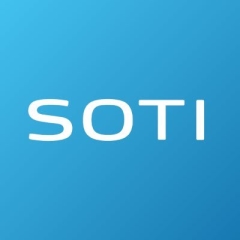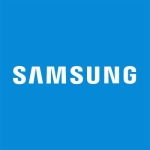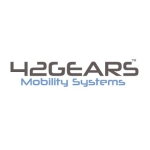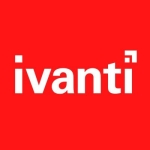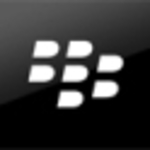What is our primary use case?
We're a privately owned transportation company and our primary use is our driver-to-dispatch communications. We use devices, managed through SOTI, that allow our drivers to receive their work for the day. We're people movers - we're not parcel movers - so we can tell them where our pick-ups and drop-offs are located. Primarily we're using it for para-transit, for disabled and elderly transportation. People who qualify for certain subsidized programs are able to ride in our vehicles and get to and from everyday locations, like the grocery store or the hospital. We provide that service and our direct line of communication is through the devices that SOTI manages.
How has it helped my organization?
Deployment. We call our locations "divisions." If we have a division that's in need of 100 devices being stood up, once we have our SOTI agent on those devices, we can push software updates, we can push profiles. We can do everything that we need to do remotely. That's saving us on the costs of traveling out to a location to set up those devices. It's actually helping us be more agile - and that's the term everybody wants to be now - more flexible. We can run a little leaner as well. We don't need quite so many people to manage all these devices.
Using that remote control feature has been really helpful for us. We're a dispatch office, some of our divisions have hundreds of vehicles at a time calling in and asking for help, looking for locations. Or maybe they have an issue with the tablet that is preventing them from moving on. The interesting thing is, now that we've given some of our dispatchers, and most of their supervisors, access into SOTI, to use that remote control feature, they can see exactly what the driver sees. That has been a big help for us.
What is most valuable?
Deploying apps on the fly. We're able to update and deploy new applications, directly from the cloud. That's been a huge feature for us. Instead of putting hands on each of these devices - and we're talking thousands of devices - we can manage it all from the backend. That's a huge feature for us. It has really changed the game in how we deploy things.
The other feature, that I have got to say is just leaps and bounds ahead of SOTI's competition, is the remote control feature. It's a true admin remote control, so we don't have to have somebody on the other side of the device allowing us access to the device. We can actually remote right in. If there are problems or errors or even if it's just a training issue with one of our drivers, we're able to pull up a tablet or phone and take pictures of it and we can actually videotape what's going on, on the device itself, and that's been huge.
We use it more than just for troubleshooting these devices. We actually use it for demos and to show people the technology that our company is capable of delivering. That's all from SOTI and it's been really great.
In the past, using third-party hardware and third-party applications, we weren't really able to do that. We could get a screenshot, a moment in time, but not actually see what the drivers were experiencing. We can actually see the driver interacting with the device itself. We can say “Oh, you're pushing the wrong button” or “Oh, that's not even the correct location." It's really helped us be more efficient, and allowed us to troubleshoot issues quicker. Before, we would have vehicles that sat for a day or two before technicians could get to them. Now, we can get to them right away.
What needs improvement?
There's always room for improvement. One of the things that I would like to see in the future is more control over the application layer. That has less to do with a technical approach, but more a business approach by SOTI, to look at, "Hey, can we partner with Google, can we partner with somebody like that." Most of our devices are Android, they're Google related, so we need access from Google to do certain things. There are ways around that, but right now that's something that we're really looking for. How can we control the Apple Air? How can we get into that app?
One of the apps that we use all the time is Google Maps. Our drivers need navigation and that's something that we really look for: How can we control the Apple Air, how can we make sure that this app doesn't try to update in the middle of the day when our driver needs it? How can we make sure that this app is always available when the driver needs it? We've run into those issues in the past.
Also, training - tips, tricks, best practices, those kinds of things - while I believe we have a training console, I've been through some of it - that's where they could improve. If they could push that a little more, provide some content that's not hidden away in another portal, that would be great. They could have different flavors of training. A video is super-helpful, even if it's a video to show some best practices and the way that things are set up. And then, offering a one-on-one or monthly webinar for a captive audience would be great too.
For how long have I used the solution?
More than five years.
What do I think about the stability of the solution?
What do I think about the scalability of the solution?
I'm not worried about growth with SOTI at all. I'm more worried about growth on my end. If we grow any more, I will need more SOTI administrators. That's about it. I would need more people who can do what I and my colleague do. There are only two of us. But that's just resources. SOTI itself is scalable. We're a pretty small fish compared to some of their other customers.
How are customer service and technical support?
Support has been great, we have Enterprise Support. The 24-hour support has really changed things, and it's just recently that we've switched to that.
I don't think I've ever had an issue with getting a response from SOTI. If something pops up that I can't figure out and my colleague can't figure out, and we've exhausted the Help documents, then we'll submit tickets. We'll call in for technical support. Almost within a day, every time, we have an answer, whether it's about how we need to approach the situation, or what changes might be needed to allow some feature to do something we're trying to do.
As a specific example, we did have an issue where some devices were reaching data limits extremely fast, way too quickly in the month. We were burning through too much data. I was able to get on the phone with our SOTI rep and he showed me three different reports that would work. He showed me how we could create some rules that would allow the devices to be moved out of one group and into another, and that would show us: These devices are streaming higher data. Then we could dig down further to figure out why these devices were using so much data.
Another specific example: One of the things we try to do is have most of our devices hardwired into our vehicles, so that they're charging all the time. They're always getting a charge just to prevent losing a device on the road. The struggle at the beginning was to make sure that these devices get turned off, because we don't want to run down our vehicle batteries, especially at the end of the day. I figured there was a feature, a way to do this without having to go in every night and every day and turn off devices that were on. It was about a 20-minute conversation with a SOTI technical support rep. They showed me, "Here, you just create a timer, and then once we create this timer, at this time of day, every day, all your devices in this group will shut off." It was amazing. It was years ago that we set that up and it's being used as a standard feature at all of our of locations now.
The folks that we work with at SOTI, even level-one support, are really well-versed.
Which solution did I use previously and why did I switch?
Our previous solution came recommended to us by the third-party transportation app that we use. They recommended we use some sort of free app that you download off Google Play. It was supposed to lock down the device. We deployed that at a very small location, 12 vehicles, 12 devices using it. Once the corporate support had rolled it out and it was left to the local division to man it, we realized we needed functionality to really use these devices remotely. If your users are savvy enough, they can navigate through those free-app lock screens, get around them, do whatever they want to. We noticed that right away.
We had to control those devices, we had to control the users. Our first call was to Verizon and we said, "This free-app solution isn't going to work." Our plan was to upgrade all the devices in our fleet - we're taking 20,000 to 30,000 vehicles across North America. Now, we don't have that many devices in place, but we've taken this as an issue and said, "Look, we're going to replace all this old legacy technology with a simple device and we're going to use SOTI to manage it." And it's taken off.
My 2019 initiative is to remove any legacy technology and replace it with a device that can be managed through SOTI.
How was the initial setup?
I was not a part of the initial setup of SOTI. I was brought in a few months after. There were definitely some growing pains with the setup, it was brand new. We didn't have any sort of MDM or anything like this. We actually didn't deploy mobile hardware until we had SOTI.
I came in about three months after they initially started to use the MDM and, honestly, the changes we made to it were minor. It was more looking at the way device groups were structured and how they grouped everything together: profiles, settings, and that sort of thing. We figured out best practices pretty quickly.
Because I wasn't there for the initial setup and start-up of SOTI, I don't know what information was presented at the time. Since then, and since moving into Enterprise Support, we do have a SOTI rep who explains things. He's open to any questions and shows us things. He's done a great job of that so far. That availability is definitely there. It's the day-to-day right now, in my staff, where we don't have time to really move ahead on other features yet. We're trying to be proactive but a lot of time we end up being reactive, just based on workload.
What about the implementation team?
We were introduced to SOTI by our Verizon Wireless representative. That's how we engaged SOTI. But we did do it directly. Verizon made that introduction and then it was direct with SOTI.
What was our ROI?
I don't see those numbers and I don't think about it that way. But let me give you an example of something that happened since we deployed SOTI.
We've had a couple of instances where tablets have gone missing or stolen, but we had one really interesting case where we had a driver who was carjacked at gunpoint. They took his vehicle, with the tablet installed. And thank God we had some good local resources who could pick up the phone and call me immediately and tell me what was going on and ask if there was a way we could track that vehicle and I said, “As long as the tablet is on, I can tell you everywhere this guy goes.” We were actually able to not only recover the vehicle but, because this gentleman who decided to take the vehicle, and everything inside it, actually took the tablet out - it looked like it was "off" because the screen was asleep - he put it in his backpack and he continued on his way that day. He was arrested a few hours later because I was on the phone with LAPD talking about where this tablet was moving to.
It was the most exciting Monday morning I've had in a long time.
The transportation vehicle was a minivan but it had been highly customized. It had a wheelchair lift in it, the seating had been done, the chassis was built up. It was a very expensive vehicle. So being able to recover that $100,000-plus vehicle was one big thing.
Also, having the technology to say, "Hey, let's stop this guy from doing this to somebody else," that sent us over the moon. That one case - and I've told this story many times - has allowed us to put our foot in the door, and say, "Look, with our company not only are you getting this great technology and great service and everything else we provide, but we have these tools that allow us to succeed and be better than our competition." This is just an example of that.
If any organization has this struggle - devices in vehicles, devices given to employees, that do go missing from time to time - we're probably at a 50 percent recovery rate, where we have been able to recover such devices. That's all because of SOTI and that we're able to track those devices through locating methods.
What's my experience with pricing, setup cost, and licensing?
They've been pretty flexible with us, because we've changed the way we do our licensing a few times. We did a yearly, and then we went back and we did a quarterly, and I think we're back to yearly right now. We've been able to work stuff out and pricing has gone down since the onset. We've got a better rate per device and it's reasonable. The licensing cost from SOTI usually doesn't scare anybody away, once it's explained.
Which other solutions did I evaluate?
I believe MobileIron was one of them and Airwatch was the other they were looking into.
What other advice do I have?
Since being introduced to SOTI, I've become that guy in our company who helps recommend these solutions. I've been to transportation conferences where I'm being asked, “What are you guys doing? How are you managing this?” and I tell them about SOTI. I say, "Look, you need to look into this company, you need to look into this MDM." I recommend it to just about everybody who talks to us about it, especially when they start describing the issues they've seen. It's easily manageable. You don't need a computer science degree to run it. You have support through SOTI and a Help document that's very thorough.
There's a lot more competition than there was at the beginning, so we do hear from competitors trying to steal us away or move us around. We're very comfortable with SOTI right now. I don't see any reasons to leave. There haven't been any game-changers here where we've said, "Oh my gosh! I can't believe SOTI's doing this now." It's been great.
There are just two of us who are admins for SOTI. We probably have 30 to 40 users who are in and out of SOTI per day. The two of us provide the maintenance and the admin level functions. In the field, for our local divisions, we have what we call our local SOTI expert. We like to have at least one at a location, it depends on the size. If we have hundreds of devices deployed at a division, it's good to have two or three folks there who can help us. Our maintenance staff, our actual maintenance technicians, aren't too involved with SOTI. They know how to enroll a device, how to reset a device, that sort of thing.
I feel like we're probably using about 10 or 20 percent of its full features. There is a lot of functionality that we haven't touched on and a lot of functionality that we don't need. There are definitely more existing features that I could use, but it's a matter of the time and resources.
Disclosure: PeerSpot contacted the reviewer to collect the review and to validate authenticity. The reviewer was referred by the vendor, but the review is not subject to editing or approval by the vendor.

